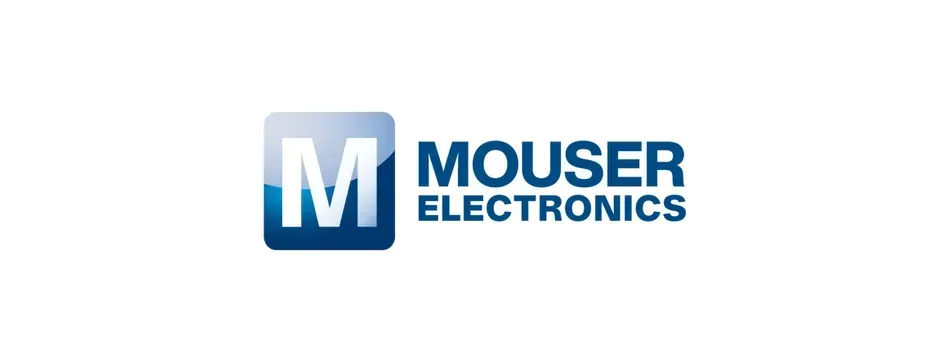Applications and performance parameters of antennas in IIoT
Article #6 of our Industrial IoT revolution series: Antennas are devices enabling wireless communication by interconverting electrical signals and electromagnetic waves.
This is the final article in a 6-part series featuring the connectivity technologies that are enabling the Industrial IoT revolution. The series introduces and explains the applications of wired and wireless connectivity technologies in various industries. This series is sponsored by Mouser Electronics. Through its sponsorship, Mouser Electronics shares its passion for technologies that enable the continued sustainable growth of Industrial IoT.
Introduction
Staying connected in manufacturing facilities is crucial for efficient production and high productivity. Implementing M2M (Machine-to-Machine) and IIoT (Industrial Internet of Things) networks facilitates the connection that enables streamlined processes and reduced downtime while increasing automated procedures. M2M communication used in devices such as smart meters is connected with servers to ensure continuous monitoring and reflect real-time data. Facilities can use smart lighting on an automated schedule to reduce electricity costs and improve worker safety. These are just some of the hundreds of thousands of applications of M2M communication and IIoT.
The one thing common between all the connected devices is the wireless antenna which brings everything together. This article explains the most common applications and performance parameters of the technology. Various characteristic plots and radiation patterns for a typical 2.4 GHz Printed Circuit Board (PCB) antenna are shown in a later section of the article.
Applications of wireless communication and antennas in various sectors
Here is a list of some application scenarios of antennas in particular and wireless communication in general.
Consumer Electronics Applications
Bluetooth and WiFi antennas are used to connect mobile devices and smart appliances in homes and workplaces. TVs, audio systems, vacuum cleaners, heating, cooling, and lighting can all be controlled from one easy-to-use, centralized hub.
Medical Applications
Antennas are used for data transmission in various medical instruments. Wearable medical devices rely on embedded antennas to transmit information such as heart rate, blood pressure, oxygen levels, and time spent exercising from the wearable device to the smartphone or cloud server. This data is stored and can be related to medical providers in person or through telehealth/telemedicine to aid in diagnosis and treatment.
Telecommunication
The cellular telecommunication market is the foundation of IoT networks and platforms. It allows communication in the form of voice and data to transmit from one device to another over a wireless network. The telecom industry plays a pivotal role in society as an enabling technology for various personal, economic, and business-related activities.
Retail Applications
Retailers use IoT embedded systems across a number of applications that improve store operations such as promotions, theft prevention, inventory management, all in order to enhance the consumer’s shopping experience. Some examples of systems utilized in retail are personalized retail marketing, staffing level indicators, cashier-less payment systems, movement tracking systems, and inventory management tools.
Smart Farming Applications
Smart farming is often considered an overlooked IoT market. With the help of precision agriculture and smart farming, plantation and livestock can be managed through remotely operated machines powered by AI. For example, monitoring tags can be attached to animals to collect data about their health and location. Drones are also used these days for planting crops and agricultural spraying. Moisture sensors and solenoid valves are used to develop automatic irrigation systems.
Smart Supply Chain Applications
Communication technologies with antennas in supply chains offer solutions to problems like tracking of goods while in transit and helping suppliers exchange inventory information. With an IoT-enabled system, factory equipment that contains embedded sensors monitor different parameters as per the requirement. Smart IoT systems can also process workflows and change equipment settings to optimize their performance. Antennas play an important role in receiving and transmitting these signals.
Smart City Applications
There are a large number of smart city applications ranging from water distribution, traffic management, waste management, environmental monitoring, to security-related applications in which getting the devices connected wirelessly is a necessity. IoT solutions offered in smart cities solve various problems related to traffic, air quality, and waste management.
Automotive Applications
Automotive antennas enable real-time communication with the surroundings to create a connected ecosystem. They provide consistent, accurate, and timely connectivity between the vehicle and its environment which is critical as more vehicles get autonomous functionalities. Developing stronger computing and communication technologies is the key to moving from assisted driving technologies to autonomous driving technologies.
Measuring the performance of PCB Antennas
Several types of IoT antennas are available in the market with different working frequencies. The typical antenna band for M2M devices is about 900MHz with low power consumption and can go up to 2.4 or 5.0 GHz in other applications.
Here is an example of the most commonly used 2.4 GHz PCB antenna to show performance, measurement settings, and use conditions. The other IoT antennas available in the market are similar and only differ in size and frequency.
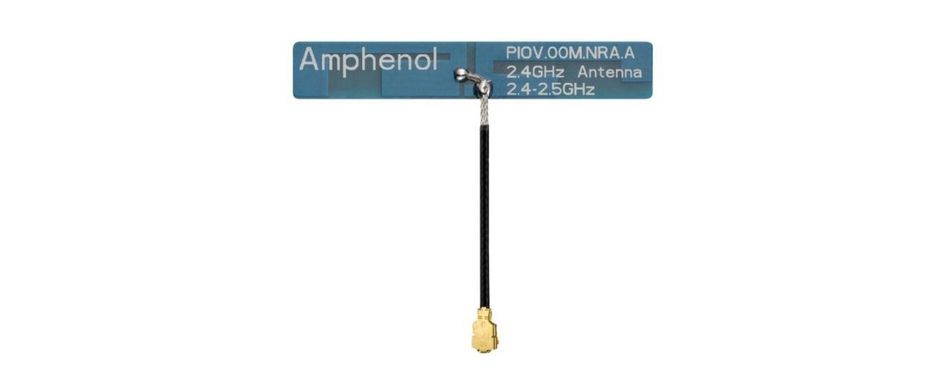
Antenna performance parameters and the test setup for evaluation
A network analyzer like the Keysight E5071C can test an antenna for its return loss and Voltage Standing Wave Ratio (VSWR). Both the terms are used to quantify the levels of reflected power in an antenna.
Return loss indicates the difference between the forward and reflected power (in dB). Ideally, the value of return loss should be maximum which indicates maximum transmission. VSWR is another numerical term used to indicate how well the antennas’ impedance is matched with the line. Smaller values of VSWR are desired.
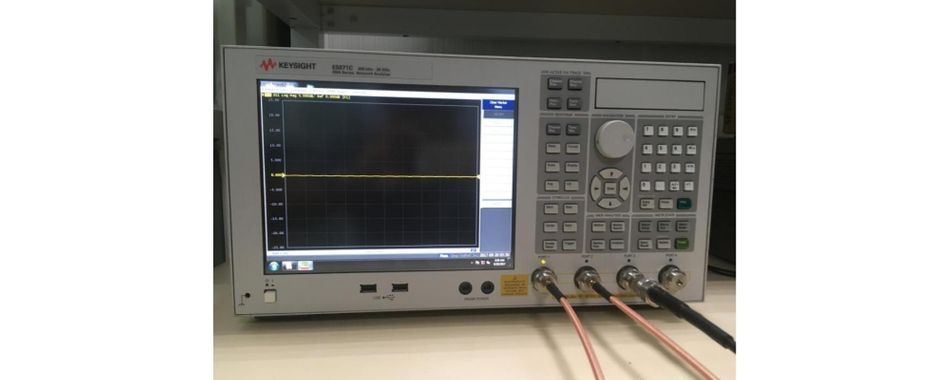
A Satimo 3D chamber can be used to test the antenna’s efficiency and radiation pattern for various frequencies. The observations indicate how an antenna might perform and interact with the objects surrounding it.
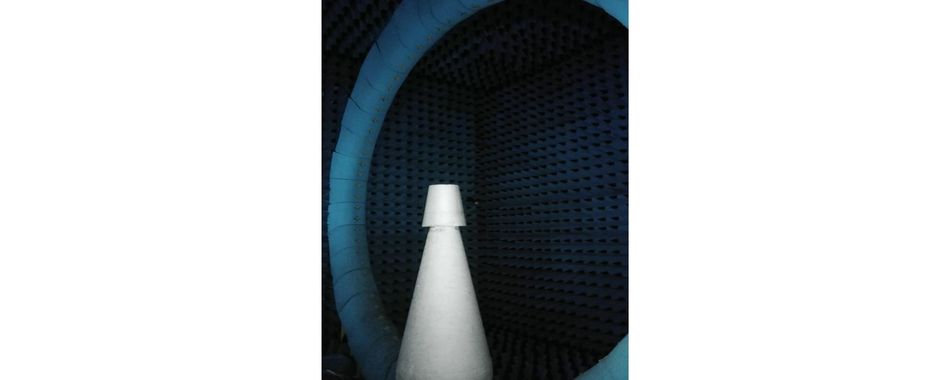
As mentioned before, the antenna is usually placed near the ground, under the practical operating condition, so for performing the tests, the PCB itself is used as the ground.

Antenna characteristics plots
Using the test setup explained in the previous section, various plots are obtained. One can notice how the frequency response of the antenna showcases the optimal characteristics for operation near the 2.4 GHz - 2.5 GHz band which is the typical range of operation for the antenna used in testing.



Radiation Patterns
Radiation patterns help engineers perform a spatial analysis of the signal strength. These patterns indicate the power of the electromagnetic signals emitted by the antenna in all directions. By observing the diagrams in all three dimensions, an accurate understanding of the antenna’s performance can be understood.
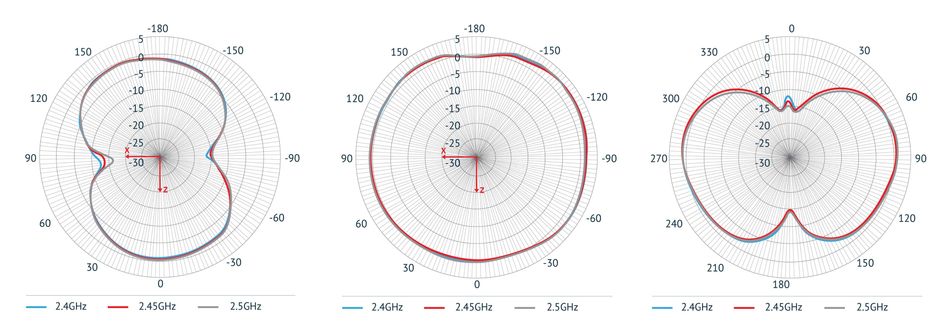
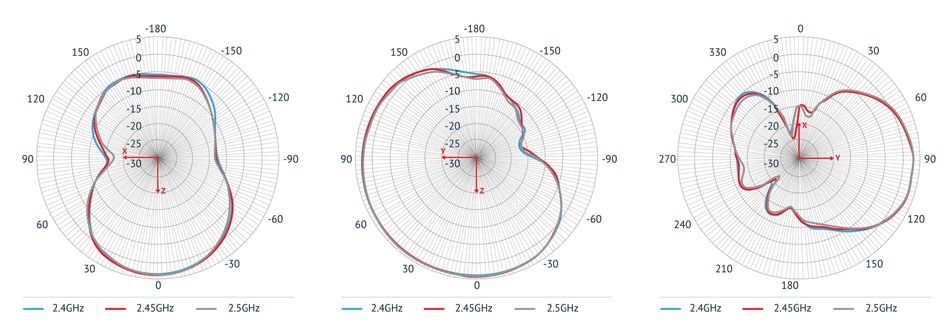
Enabling Wireless Communication in Industrial Devices with Amphenol MCP
Amphenol Mobile Consumer Products (MCP), one of the world's largest, full service, custom antenna solution providers, is the designer and manufacturer of antennas used in mobile terminals with high performance, miniaturization, and quality at a low cost.
Amphenol MCP designs and manufactures internal, external, retractable, and several other types of antennas used in platforms such as mobile devices (mobile phones, laptops, tablets, wearables), set-top boxes, gaming consoles, automobiles, M2M communication systems, and numerous IoT devices. Single and multi-band antenna solutions cover all wireless bands including USGSM, GSM, PCS, DCS, UMTS, GPS, CDMA, DVB-H, Bluetooth, WLAN, WiMAX, 802.11a, and 802.11b/g. Amphenol MCP has state-of-the-art R&D facilities in Shanghai, Beijing, and Shenzhen.
Conclusion
Connectivity technologies have a key role to play in the rapidly evolving industries. These technologies will help achieve accurate control over the industrial processes, reduce time to market, be highly scalable, and offer maximum safety. It is not just one, but an aggregation of multiple innovative cutting-edge technologies that are leading us to the next industrial revolution.
This article was initially published by Mouser and Amphenol in an e-magazine. It has been substantially edited by the Wevolver team and Electrical Engineer Ravi Y Rao. It's the final article of a 6-part series that covers the applications and performance of antennas used in wireless communication.
Article one explained how electrical interconnects are engineered in data centers to deliver high power in a small footprint.
Article two was about the sensing technologies used in Building Automation Systems
Article three analyzed the key trends and challenges for connectivity technologies used in smart manufacturing.
Article four provided an overview of electrical interconnects for harsh environments.
Article five explored the connectivity technologies used at construction sites.
Article six examined the applications and performance parameters of antennas that enable wireless communication.
About the sponsor: Mouser
Mouser Electronics is a worldwide leading authorized distributor of semiconductors and electronic components for over 1,100 manufacturer brands. They specialize in the rapid introduction of new products and technologies for design engineers and buyers. Their extensive product offering includes semiconductors, sensors, interconnects, passives, and electromechanical components.


